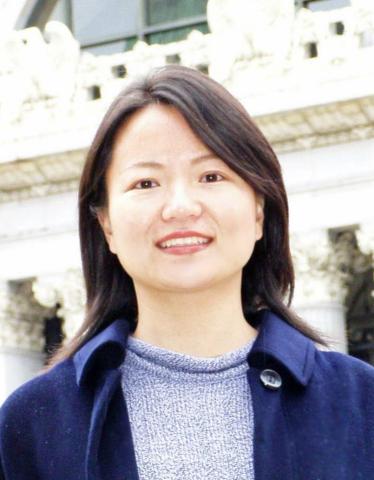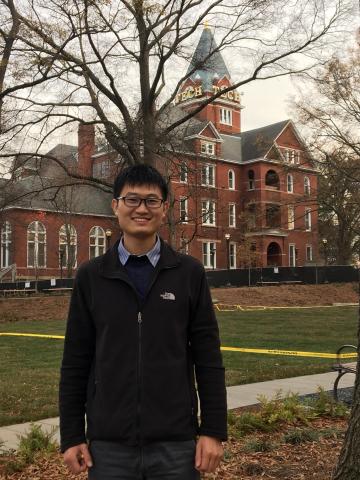ECE Associate Professor Ying Zhang and ECE Ph.D. student Zongyang Xia have received a TechConnect National Innovation Award, which was presented last week in Washington, D.C. at the TechConnect World Innovation Conference and Expo.
Ying Zhang and Zongyang Xia have received a TechConnect National Innovation Award, which was presented last week in Washington, D.C. at the TechConnect World Innovation Conference and Expo. Zhang is an associate professor in the Georgia Tech School of Electrical and Computer Engineering (ECE), and Xia is an ECE Ph.D. student in the Sensors and Intelligent Systems Laboratory, which is led by Zhang.
These awards identify the top 15 percent of submitted technologies as ranked by the TechConnect Corporate & Investment Partner Committee, and the innovation rankings are based on the potential positive impact the submitted technology will have on a specific industry sector. Innovations are submitted from global academic technology transfer offices, early-stage companies, small business innovative research (SBIR) awardees, and government and corporate research laboratories.
Zhang and Xia received this award for their technology entitled, “Noise suppression scheme based on phase locked loop for non-contact vital sign detection.” They have developed and experimentally demonstrated the use of a non-contact vital sign detection system using phase locked loop (PLL) to automatically suppress the residual phase noise. A PLL is a negative feedback scheme that synchronizes the output signal with a reference. The designed dual-carrier system uses PLL to lock the phase of one carrier’s beat signal to a low-noise reference signal to suppress the residual phase noise, providing a clean transmission path for the other carrier.
When compared to a similar but unlocked setup, results show that the developed system improves signal to noise ratio by 50 percent at 50 cm. The developed system is also used to successfully measure a heartbeat at 250 cm (more than double the distance of the unlocked system) and at four physical orientations. Potential commercial applications for this technology include biomedical monitoring, healthcare, fitness monitoring, physical monitoring of astronauts/drivers/pilots, and search and rescue operations.
Additional Images

